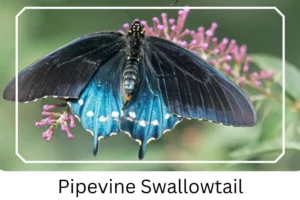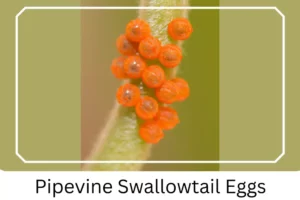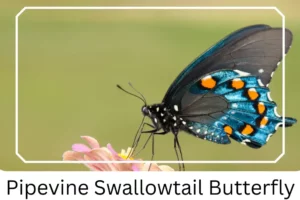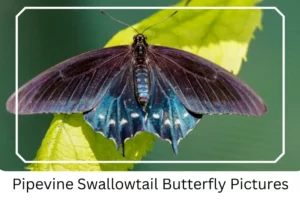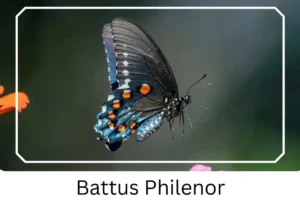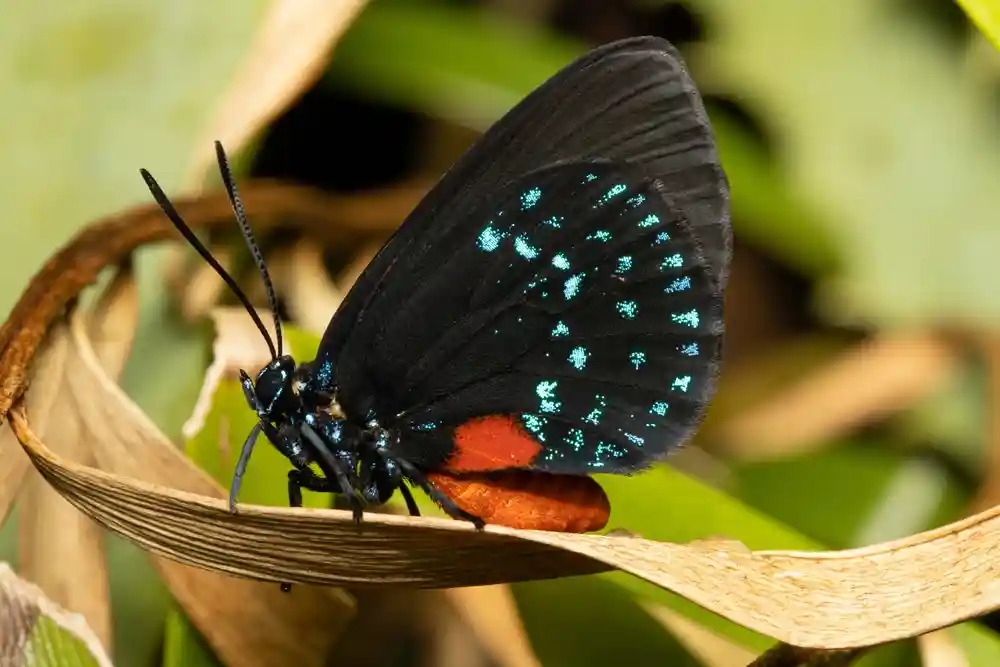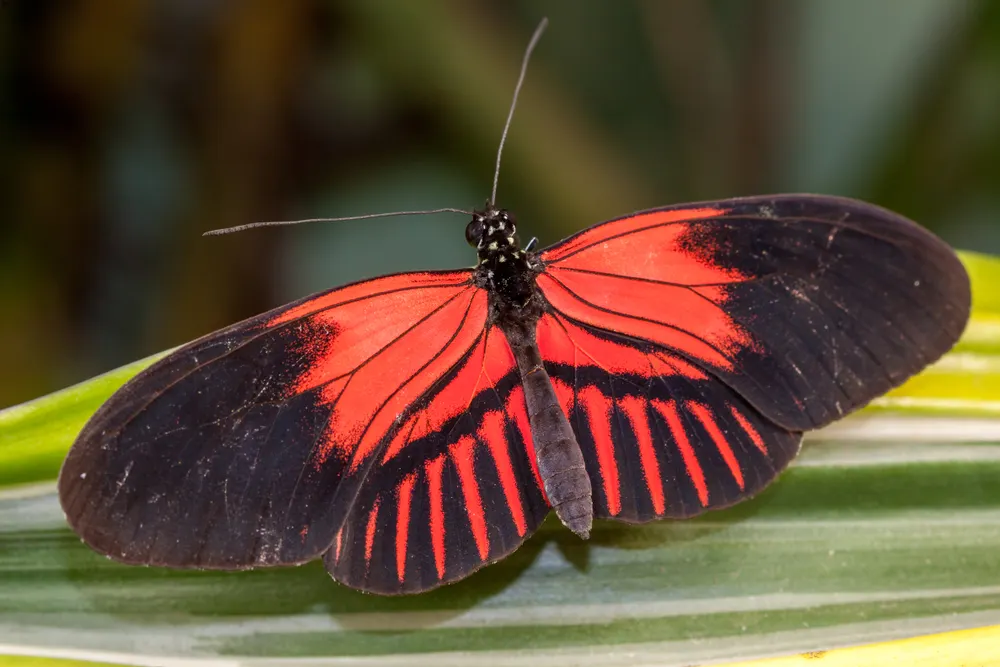Pipevine Swallowtail (Battus philenor)
The Pipevine Swallowtail, a species of iridescent blue butterflies, graces various parts of the Americas with its presence. These butterflies are a spectacle in sunlit meadows and fields during the warmer months of spring and summer. Known for their unique mimicry patterns, they serve as a model for other species attempting to replicate their distinctive appearance for survival advantages.
Scientific Classification
- Family: Papilionidae
- Genus: Battus
- Common names: Blue swallowtail
- Scientific Name: Battus philenor
Overview
Belonging to a family renowned for their vivid colors and elegant flight, the Pipevine Swallowtail embodies the enchantment of the natural world. Their lifecycle, from caterpillar to majestic adult, is a journey of transformation, marked by distinctive stages that contribute to their survival and the ecosystem’s diversity. These butterflies are not only a testament to nature’s beauty but also its complexity.
Description and Identification
Caterpillar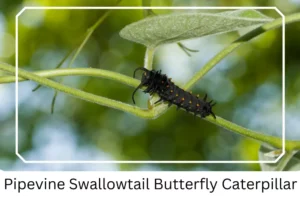
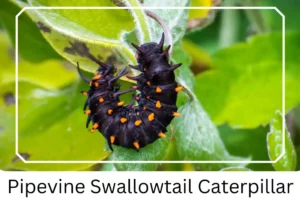
The journey of the Pipevine Swallowtail begins with the caterpillar stage, where the larvae exhibit a striking black coloration adorned with rows of yellow dots or, alternatively, a vibrant red with sting- or spine-like growths. These caterpillars feed exclusively on plants from the genus Aristolochia, incorporating aristolochic acid into their bodies as a defense mechanism against predators. This stage of their life cycle lasts approximately 3 to 4 weeks, preparing them for their next phase of metamorphosis.
Pupa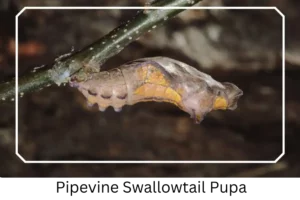
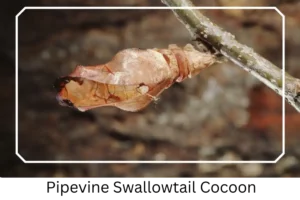
Transitioning into the pupa stage, the Pipevine Swallowtail cocoon adopts a light brown hue, interlaced with dark, vein-like patterns. This camouflage, mimicking dead leaves, provides an added layer of protection against predators. Suspended by a silk thread from their host plant, the chrysalis stage endures for about 10 to 20 days, influenced by the surrounding weather conditions.
Adult Butterfly
Upon reaching adulthood, the Pipevine Swallowtail exhibits a breathtaking display of iridescence.
Sexual Dimorphism: While not starkly evident, subtle differences exist between males and females.
Color and Appearance: The adult butterflies’ wings, when open, reveal an iridescent blue or blue-green shimmer, with males typically displaying more vibrant colors. The hindwings are adorned with a row of white spots. Conversely, the ventral side features orange spots within an iridescent blue field accented with white.
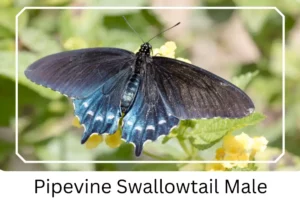
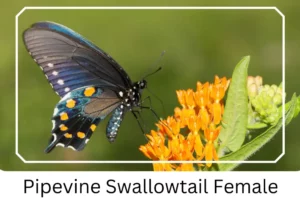 Average Wingspan: Ranging from 7 to 13 cm (2.75 – 5.11 in), their wingspan is a testament to their majestic presence.
Average Wingspan: Ranging from 7 to 13 cm (2.75 – 5.11 in), their wingspan is a testament to their majestic presence.
Flight Pattern: Their flight is characterized as slow and erratic, adding to their mystical allure in their natural habitats.
Quick Facts | |
| Distribution | From the northern reaches of the Americas to southern Mexico, including parts of Canada. |
| Habitat | Thriving in open grasslands, woodlands, meadows, and even backyard gardens. |
| Lifespan of Adults | A brief but impactful 6 to 14 days. |
| Host Plants | Predominantly passionflower species in Central America, with a variety across their range. |
| Adult Diet | Primarily nectar from flowers like Cirsium, Phlox, and Vernonia. |
How to Identify Pipevine Swallowtail?
Identifying a Pipevine Swallowtail can be an enchanting experience. Look for their distinctive iridescent blue wings, which set them apart in their natural habitats. The male’s vibrant colors are particularly striking. The presence of orange spots on the underside of their wings, surrounded by an iridescent blue and white highlight, is a key identifying feature. Their erratic flight pattern, coupled with their unique coloration and wing shape, makes them unmistakable. Observing these butterflies in their preferred habitats, such as open grasslands or meadows, during spring and summer enhances the chances of spotting them.
Did You Know?
- The Pipevine Swallowtail has a remarkable affinity for pink and purple flowers, which are believed to attract them during their search for nectar.
- During courtship, males present sodium extracted from mud puddles as a nuptial gift to females, a fascinating behavior showcasing the complexity of their mating rituals.
- The caterpillars’ consumption of aristolochic acid not only deters predators but also makes them unpalatable to many would-be threats, ensuring their survival through chemical defense.
Conclusion
The Pipevine Swallowtail butterfly, with its striking colors and fascinating lifecycle, is a marvel of nature. From the visually striking caterpillar to the iridescent adult, each stage of their life is a testament to the wonder of natural evolution and adaptation. Their presence enriches the ecosystems they inhabit, adding beauty and contributing to biodiversity. Understanding and appreciating these magnificent creatures can inspire conservation efforts, ensuring their survival and the health of their natural habitats for future generations to marvel at.
Pipevine Swallowtail Pictures

Scientific Classification

- Family: Papilionidae
- Genus: Battus
- Common names: Blue swallowtail
- Scientific Name: Battus philenor

